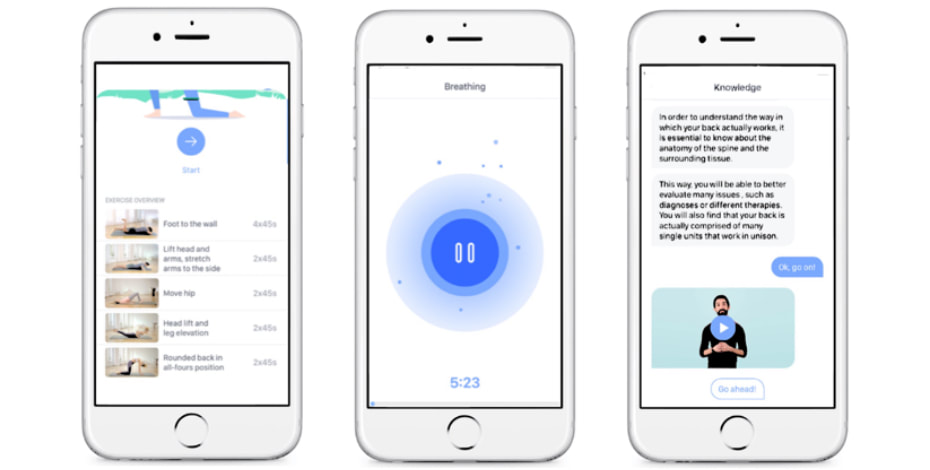|
The “Quantified Self” movement is here. This movement is associated with individuals utilising technology such as wearable devices and mobile phone apps to track specific health parameters (mental, emotional, physical and social) in their daily lives. The collection of daily data can help the individual gain self-knowledge to improve their quality of lives through potential actionable insights such data can provide. With the emergence of health consumerism and advancements in technology, there is an increasing number of relatively inexpensive wearable devices and mobile phone apps which enable individuals to track various health parameters during their daily lives, including symptom logging, sleep hygiene, stress levels, heart rate, diet and activity levels. There is an increasing amount of physical products available to the public at retailers from popular brands such as Apple, Samsung, Garmin, Fitbit and Polar. There are also more advanced niche products such as the Athos Training System, which is a smart garment which tracks muscle activity and motion. All of these products have broader implications for physiotherapists when managing their patient’s general health and optimising clinical outcomes. Health professionals such as physiotherapists are traditionally guided by established science and evidence based practice guidelines. Therefore, the self-quantification movement may seem in conflict with this due to the experimental nature of this approach and relatively smaller population sizes applied. Nonetheless, there is an increasing number of health professionals such as physiotherapists who are looking more closely at how to extract meaningful insights from this data from self-tracking to optimise health outcomes at both an individual and population level. In particular, many of the measures from such solutions can assist physiotherapists in behavioural change and promoting healthier lifestyles. Key factors that have contributed to the rise of self-quantification and self-experimentation include:
What are the implications for physiotherapists managing patients who are self-quantifiers? From one perspective, self-quantifiers are ideal patients as they are engaged and proactive in taking responsibility over their own health. However, it is important to be aware that being unprepared for such scenarios can result in patients challenging the physiotherapist’s knowledge, and as a result, threaten their authority. So in such circumstances, it may be best for the physiotherapist to take a strong collaborative and work with the patient as partners in their health, focusing on helping their patient achieving their goals, ensuring that the patient is informed of the potential benefits and risks associated with what they are experimenting with, and ensure avoiding any potential danger and safety issues. An example of self-quantification often used in the community are activity tracking solutions such as the Strava app, Fitbits, Apple and Garmin watches. This has been reported to be a useful tool for physiotherapists as it can provide insights into external training load and assist with injury prevention and performance optimisation. In addition, the online social community associated with many of these apps which often incorporate benchmarking performance can be helpful for motivation and support. A back pain app outperforming physiotherapy? With an increasing number of freely available articles on the internet such as “The back pain app out-performing physiotherapy” backed by a randomised control trial, physiotherapists should start to take serious note of the longer term implications of how emerging digital health solutions may impact their practices and patients. Without going into the details of the limitations of this study, it recently demonstrated that patients using the Kaia app reported significantly less pain than the control group which comprised of weekly physiotherapy and online education. Both groups were encouraged to incorporate an active lifestyle and perform a home exercise program. The Kaia app comprises of 3 therapy modules: back pain education, hands off physiotherapy, and mindfulness/relaxation techniques. Users of the app also have the ability to interact with a human coach via the app if they have any particular questions. This study adds to the emerging body of evidence which supports a “multi-modal approach” to chronic pain management. Traditionally, multi-modal treatment approaches to chronic pain management is often costly, limited to a small number of specialised medical facilities and appropriate clinical team. The results of this study provide promise that emerging digital health technologies have the potential to provide viable alternatives to traditional models of care, providing better accessibility, affordability and in many cases, more effective treatment solutions for specific populations. Key implications for physiotherapists:
Disclaimer: This text does not serve as medical advice and if you have any questions, seek advice from your doctor. Blog post written by Barry Nguyen, an experienced sports and musculoskeletal physiotherapist and digital health expert.
0 Comments
Your comment will be posted after it is approved.
Leave a Reply. |
AuthorContributors Archives
March 2020
Categories
All
|
|
SOCIAL
|
HealthAide is an independent resource. We do not own shares or make profits from the products listed on this site. Products and services have been curated using the Four Principles of Healthcare Ethics (Beauchamp, T. and Childress, J. (1985) Principles of Biomedical Ethics)
© COPYRIGHT 2018. ALL RIGHTS RESERVED.


 RSS Feed
RSS Feed